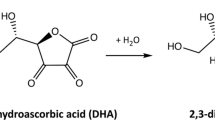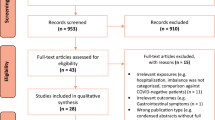Abstract
Several small studies have identified possible associations between low serum zinc levels and worse outcomes in patients acutely hospitalized for a variety of diseases. This study systematically evaluated all published literature to determine whether serum zinc might independently predict important outcomes in hospitalized patients. PubMed, Embase, and Cochrane Libraries databases were searched from 1970 to 2019 to identify all citations having the keyword “zinc” with hospital outcomes. Studies were included if they measured the association between serum zinc levels in non-electively hospitalized patients with survival, length of stay, or unplanned readmission. Data were double-abstracted to evaluate the association between zinc levels and these outcomes. Our search returned 1091 citations of which 12 studies met the inclusion criteria. Studies were small (median 112.5 patients) using unspecified sampling methods. Seven studies were restricted to critically ill patients. Mean zinc levels ranged from 27.5 to 85.3 μg/dL. Baseline mean zinc levels were significantly lower (p < 0.05) in patients who eventually died in 1 of 7 studies. Five of seven studies found significantly increased risk of death in hospital with lower zinc levels. Associations between zinc levels and critical care or hospital length of stay were unclear. In 1 study, lower zinc levels were associated with a significantly increased risk of unplanned readmission. Current studies measuring the association between serum zinc levels and outcomes in acutely hospitalized patients are limited by their sample sizes, select patient populations, and limited statistical analyses. The association of zinc levels with hospital patient outcomes is unclear.


Similar content being viewed by others
References
Prasad AS, Halsted JA, Nadimi M (1961) Syndrome of iron deficiency anemia, hepatosplenomegaly, hypogonadism, dwarfism and geophagia. Am J Med 31:532–546
Prasad AS, Schulert AR, Miale A Jr, Farid Z, Sandstead HH (1963) Zinc and iron deficiencies in male subjects with dwarfism and hypogonadism but without ancylostomiasis, schistosomiasis or severe anemia. Am J Clin Nutr 12:437–444
Andreini C, Banci L, Bertini I, Rosato A (2006) Counting the zinc-proteins encoded in the human genome. J Proteome Res 5:196–201
Prasad AS (2014) Zinc is an antioxidant and anti-inflammatory agent: its role in human health. Front Nutr 1:14
Allen JI, Perri RT, McClain CJ, Kay NE (1983) Alterations in human natural killer cell activity and monocyte cytotoxicity induced by zinc deficiency. J Lab Clin Med 102:577–589
Prasad AS, Rabbani P, Abbasii A, Bowersox E, Fox MR (1978) Experimental zinc deficiency in humans. Ann Intern Med 89:483–490
Barnett JB, Dao MC, Hamer DH, Kandel R, Brandeis G, Wu D, Dallal GE, Jacques PF, Schreiber R, Kong E, Meydani SN (2016) Effect of zinc supplementation on serum zinc concentration and T cell proliferation in nursing home elderly: a randomized, double-blind, placebo-controlled trial. Am J Clin Nutr 103:942–951
Laurent M et al (2015) Interrelations of immunological parameters, nutrition, and healthcare-associated infections: prospective study in elderly in-patients. Clin Nutr 34:79–85
Prasad AS, Beck FWJ, Bao B, Fitzgerald JT, Snell DC, Steinberg JD, Cardozo LJ (2007) Zinc supplementation decreases incidence of infections in the elderly: effect of zinc on generation of cytokines and oxidative stress. Am J Clin Nutr 85:837–844
Prasad AS, Beck FWJ, Kaplan J, Chandrasekar PH, Ortega J, Fitzgerald JT, Swerdlow P (1999) Effect of zinc supplementation on incidence of infections and hospital admissions in sickle cell disease (SCD). Am J Hematol 61:194–202
Meydani SN, Barnett JB, Dallal GE, Fine BC, Jacques PF, Leka LS, Hamer DH (2007) Serum zinc and pneumonia in nursing home elderly. Am J Clin Nutr 86:1167–1173
Marreiro DdN et al (2017) Zinc and oxidative stress: current mechanisms. Antioxidants (Basel) 6:24
Mariani E, Mangialasche F, Feliziani FT, Cecchetti R, Malavolta M, Bastiani P, Baglioni M, Dedoussis G, Fulop T, Herbein G, Jajte J, Monti D, Rink L, Mocchegiani E, Mecocci P (2008) Effects of zinc supplementation on antioxidant enzyme activities in healthy old subjects. Exp Gerontol 43:445–451
Bao B, Prasad AS, Beck FWJ, Fitzgerald JT, Snell D, Bao GW, Singh T, Cardozo LJ (2010) Zinc decreases C-reactive protein, lipid peroxidation, and inflammatory cytokines in elderly subjects: a potential implication of zinc as an atheroprotective agent. Am J Clin Nutr 91:1634–1641
Bhat MH, Mudassir, Rather AB, Dhobi GN, Koul AN, Bhat FA, Hussain A (2016) Zinc Levels in community acquired pneumonia in hospitalized patients; a case control study. Egypt J Chest Dis Tuberc 65:485–489
Congy F, Clavel JP, Devillechabrolle A, Gerbet D, Marescot MR, Moulias R (1983) Plasma zinc levels in elderly hospitalized subjects. Correlation with other nutritional and immunological markers and survival. Sem Hop 59:3105–3108
Markiewicz-Zukowska R, Gutowska A, Borawska MH (2015) Serum zinc concentrations correlate with mental and physical status of nursing home residents. PLoS One 10:e0117257
Prasad AS et al (1993) Zinc deficiency in elderly patients. Nutrition 9:218–224
Yu X, Huang L, Zhao J, Wang Z, Yao W, Xianming X, Huang J, Bian B (2018) The relationship between serum zinc level and heart failure: a meta-analysis. Biomed Res Int 2739014:9
Sengupta S, Wroblewski K, Aronsohn A, Reau N, Reddy KG, Jensen D, te H (2015) Screening for zinc deficiency in patients with cirrhosis: when should we start? Dig Dis Sci 60:3130–3135
Shih C-T, Shiu YL, Chen CA, Lin HY, Huang YL, Lin CC (2012) Changes in levels of copper, iron, zinc, and selenium in patients at different stages of chronic kidney disease. GMBHS 4:128–130
Belbraouet S, Biaudet H, Tébi A, Chau N, Gray-Donald K, Debry G (2007) Serum zinc and copper status in hospitalized vs. healthy elderly subjects. J Am Coll Nutr 26:650–654
Alexanian I, Parissis J, Farmakis D, Athanaselis S, Pappas L, Gavrielatos G, Mihas C, Paraskevaidis I, Sideris A, Kremastinos D, Spiliopoulou C, Anastasiou-Nana M, Lekakis J, Filippatos G (2014) Clinical and echocardiographic correlates of serum copper and zinc in acute and chronic heart failure. Clin Res Cardiol 103:938–949
Florea D, Molina-López J, Hogstrand C, Lengyel I, de la Cruz AP, Rodríguez-Elvira M, Planells E (2018) Changes in zinc status and zinc transporters expression in whole blood of patients with systemic inflammatory response syndrome (SIRS). J Trace Elem Med Biol 49:202–209
Oakes EJ et al (2008) Acute inflammatory response does not affect erythrocyte concentrations of copper, zinc and selenium. Clin Nutr 27:115–120
Katayama T, Honda Y, Yamasaki H, Kitamura S, Okano Y (1990) Serum zinc concentration in acute myocardial infaction. Angiology 41:479–485
Arnaud J, Faure H, Bourlard P, Denis B, Favier AE (1994) Longitudinal changes in serum zinc concentration and distribution after acute myocardial infarction. Clin Chim Acta 230:147–156
Saleh P, Sadeghpour A, Mirza-Aghazadeh-Attari M, Hatampour M, Naghavi-Behzad M, Tabrizi A (2017) Relationship between plasma levels of zinc and clinical course of pneumonia. Tanaffos 16:40–45
Cander B, Dundar D, Gul M, Girisgin S (2010) Prognostic value of serum zinc levels in critically ill patients. Crit Care 14:P593–P593
Visalakshy J, Surendran S, Pillai M, Pillai G, Rajendran A (2017) Sherif AA (2017) Could plasma zinc be a predictor for mortality and severity in sepsis syndrome? Int J Res Med Sci 5:3929–3934
Besecker BY, Exline MC, Hollyfield J, Phillips G, DiSilvestro RA, Wewers MD, Knoell DL (2011) A comparison of zinc metabolism, inflammation, and disease severity in critically ill infected and noninfected adults early after intensive care unit admission. Am J Clin Nutr 93:1356–1364
Heyland DK, Jones N, Cvijanovich NZ, Wong H (2008) Zinc supplementation in critically ill patients: a key pharmaconutrient? JPEN J Parenter Enteral Nutr 32:509–519
Hayden JA, van der Windt DA, Cartwright JL, Cote P, Bombardier C (2013) Assessing bias in studies of prognostic factors. Ann Intern Med 158:280–286
Moher D, Liberati A, Tetzlaff J, Altman DG (2009) Preferred reporting items for systematic reviews and meta-analyses: the PRISMA statement. PLoS Med 6:e1000097
Gariballa S, Alessa A (2017) Zinc depletion increases readmission in older patients: an example of interactions between nutrition and disease. Int J Vitam Nutr Res 87:10–16
Hoeger J, Simon TP, Beeker T, Marx G, Haase H, Schuerholz T (2017) Persistent low serum zinc is associated with recurrent sepsis in critically ill patients - A pilot study. PLoS One 12:e0176069
Lee YH, Bang ES, Lee JH, Lee JD, Kang DR, Hong J, Lee JM (2019) Serum concentrations of trace elements zinc, copper, selenium, and manganese in critically ill patients. Biol Trace Elem Res 188:316–325
LINKO R, KARLSSON S, PETTILÄ V, VARPULA T, OKKONEN M, LUND V, ALA-KOKKO T, RUOKONEN E, the FINNALI Study Group* (2011) Serum zinc in critically ill adult patients with acute respiratory failure. Acta Anaesthesiol Scand 55:615–621
Okabe T, Yakushiji T, Shimazu S, Saito J, Kimura T, Oyama Y, Igawa W, Ono M, Kido T, Ebara S, Yamashita K, Yamamoto MH, Amemiya K, Isomura N, Ochiai M (2018) Serum zinc concentration in patients with acute myocardial infarction in percutaneous coronary intervention era. PLoS One 13:e0203074
Stefanowicz F, Gashut RA, Talwar D, Duncan A, Beulshausen JF, McMillan DC, Kinsella J (2014) Assessment of plasma and red cell trace element concentrations, disease severity, and outcome in patients with critical illness. J Crit Care 29:214–218
Yoshihisa A, Abe S, Kiko T, Kimishima Y, Sato Y, Watanabe S, Kanno Y, Miyata-Tatsumi M, Misaka T, Sato T, Suzuki S, Oikawa M, Kobayashi A, Yamaki T, Kunii H, Nakazato K, Ishida T, Takeishi Y (2018) Association of serum zinc level with prognosis in patients with heart failure. J Card Fail 24:375–383
Jang JY, Shim H, Lee SH, Lee JG (2014) Serum selenium and zinc levels in critically ill surgical patients. J Crit Care 29:317.e315–317.e318
Helmy TA, Beshey BN (2016) Correlation between serum zinc and mortality in septic patients. Int J Adv Res 4:1514–1517
Zhao LP, Kolonel LN (1992) Efficiency loss from categorizing quantitative exposures into qualitative exposures in case-control studies. Am J Epidemiol 136:464–474
Steyerberg, E. Clinical prediction models: a practical approach to development, validation, and updating, (2009).
Author information
Authors and Affiliations
Corresponding author
Additional information
Publisher’s Note
Springer Nature remains neutral with regard to jurisdictional claims in published maps and institutional affiliations.
Appendices
Appendix 1
MedLine search strategies used for systematic review.
-
A.
Primary search strategy (using PubMed platform): ((serum zinc) OR (blood zinc)) AND ((mortality) OR (readmission) OR (length of stay))
This search returned 1075 citations (Fig. 1)
-
B.
Secondary search strategy (Using OvidR platform):
1 | *Zinc/bl [Blood] |
2 | *Zinc/df [Deficiency] |
3 | 1 or 2 |
4 | limit 3 to (humans and yr = “1970–2019”) |
5 | Prognosis/ |
6 | *Biomarkers/bl [Blood] |
7 | Hospital Mortality/ |
8 | Survival Rate/ or Survival/ |
9 | “Length of Stay”/ |
10 | 5 or 6 or 7 or 8 or 9 |
11 | 4 and 10 |
Appendix 2
Rights and permissions
About this article
Cite this article
Rodic, S., McCudden, C. & van Walraven, C. The Prognostic Value of Serum Zinc Levels in Acutely Hospitalized Patients: a Systematic Review. Biol Trace Elem Res 199, 4447–4457 (2021). https://doi.org/10.1007/s12011-021-02575-8
Received:
Accepted:
Published:
Issue Date:
DOI: https://doi.org/10.1007/s12011-021-02575-8




